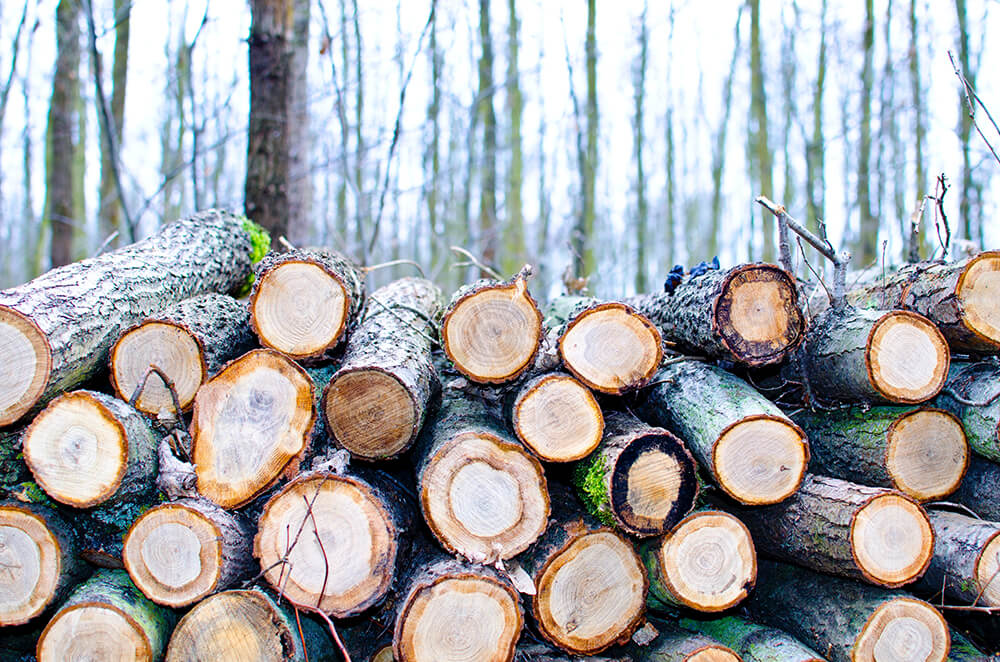Selective cuts

I don’t know who started it, but at some point a lot of people started talking about timber harvesting in two categories: “clearcutting” and “selective cutting.” When I describe my job to laypeople, they often ask if I do “selective cutting,” perhaps trying to ensure that I’m not one of those “bad guys” associated with “clearcutting.” This is a tough question to answer; these two terms are complicated and convoluted, and impose a binary distinction that misrepresents the nuances of modern forestry.
Early European settlers were amazed by the abundance of the timber in North America, particularly the massive white pine. Coming from a continent that had been intensively managed by (European) humans for thousands of years, this resource seemed to be endless. Settlers and loggers used clearcutting as a means to clear pastureland, to harvest lumber to use around their homesteads and as a means to liquidate this valuable resource. Because the supply of timber seemed infinite, there was little thought given to the future of the forest, though some believed that by the time loggers had reached the westward extent of this New World that eastern areas would be ready to harvest again.
Today clearcutting persists in the U.S. as a standard method of harvesting timber in intensively managed tree plantations, most notably in the southeast, northwest and portions of Maine, where trees are planted and grown like corn. Clearcutting has become less common in the Northeast as its long-term effects have become more apparent and as people have become more sensitive to its visual impacts. We are also blessed in Vermont with forests that readily regenerate new trees following disturbance and that have valuable timber species that grow in partial or complete shade.
While clearcutting had become unpopular in the Northeast by the mid to late 1900s, extractive logging had not. Loggers and landowners took to “high-grading,” a practice where only the most valuable trees are cut, or “diameter-limit” cutting, where all trees above a certain size are cut. While these harvests were still driven entirely by economics and not by a concern for the long-term health or productivity of the forest, they were not clearcuts, and so the term “selective cuts” was used. As far as I can tell, a “selective cut” is any harvest where some trees are retained; the term, however, while it avoids the negative connotations of “clearcut,” says nothing about the effect of the harvest on the forest’s health.
This terminology was further muddied by the development of the “selection” system, a silvicultural technique where single trees or small groups of trees of all sizes are harvested to encourage the growth of trees of many species and ages. In contrast to selective cutting, the selection system is a science-based way of improving wildlife habitat and a forest’s health and resilience, based on the natural disturbance regimes of a forest.
In addition to the selection system, there are dozens of different forest management strategies (“silvicultural treatments”), each intended to address conditions in the forest and achieve a specific result and each informed by research on the way trees and forests grow and develop. While most of these management strategies involve harvesting timber, which is used for building materials, firewood, paper and electricity, none of them are designed solely to capture the timber value in a forest.
The understanding of clearcutting in the forest management community has also changed. Silvicultural clearcuts are sometimes used by foresters as a way of regenerating a uniformly unhealthy stand of trees. Most clearcuts that I see in Vermont are in areas that have been highly degraded by humans, in forests that have been extensively high-graded or where unhealthy stands have resulted from agricultural field abandonment. Forests like this will often be healthier in the long term if the unhealthy trees are removed and the area is completely regenerated to new trees. These harvests can create “early successional” forests, a somewhat rare habitat condition valued by an array of native wildlife, and provide diversity in our forests by encouraging early-successional tree species such as white birch, pin cherry and aspen.
One of the hardest parts of being a forest manager is defusing the misconceptions about forest management and repairing the damage and misconceptions created by logging practices of the past. One of the first steps in this is getting people to think a little harder about how we talk about forestry.
Ethan Tapper is the Chittenden County forester. He can be reached at (802) 585-9099, via email, or at his office at 111 West Street, Essex Junction.

